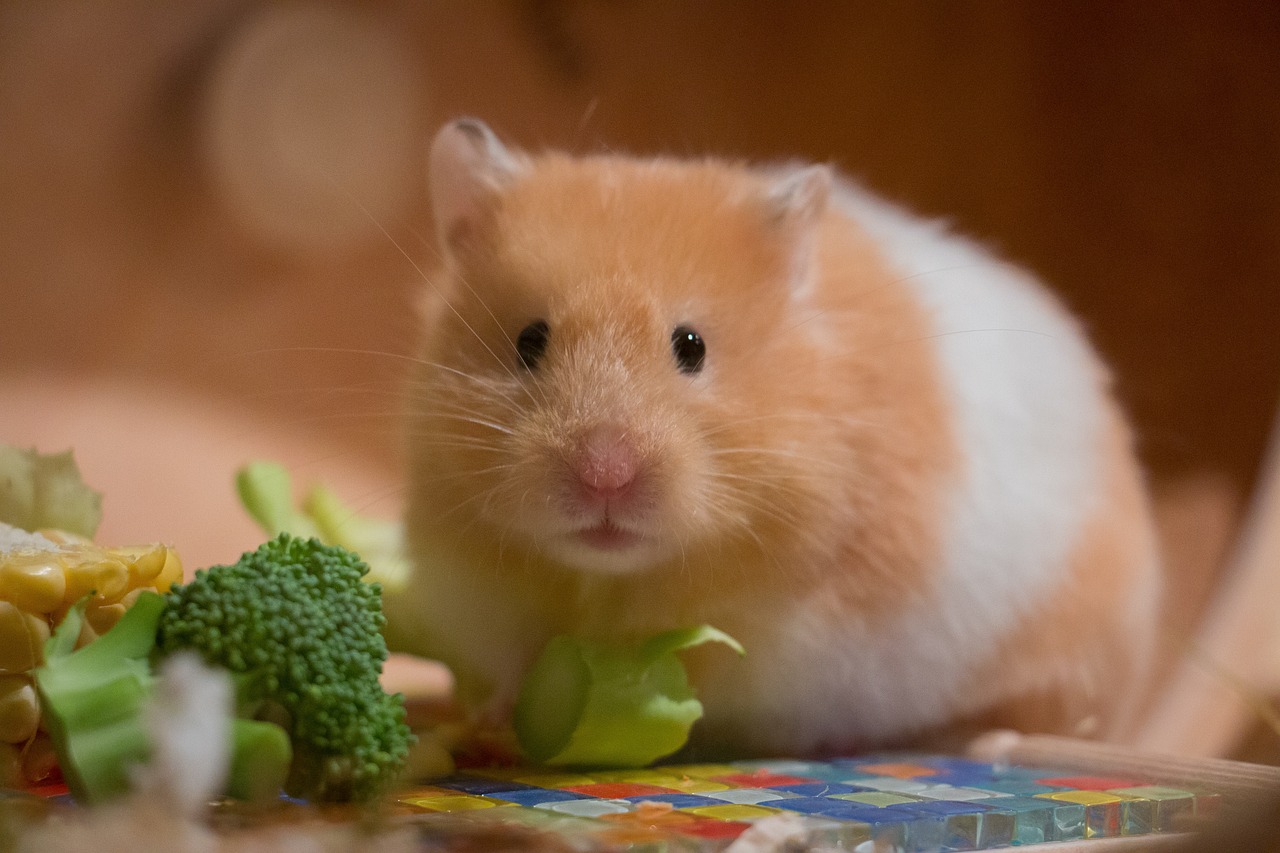Breeding Guide for Hamsters and Communal Living

Welcoming a Hamster into Your Home Owning a hamster offers a unique joy, presenting a wonderful opportunity to nurture a bond with a small but spirited companion. These petite pets bring a bundle of energy into your life, often providing endless entertainment with their playful antics and curious nature. However, the decision to bring a hamster into your home also comes with significant responsibilities. It requires a commitment to provide a safe, enriching, and loving environment.
Understanding Your Hamster’s Needs To ensure the well-being of your hamster, it’s crucial to understand their specific needs, which vary from one species to another. Providing a healthy and happy life for your hamster involves more than just food and water; it includes understanding their habitat requirements, social behaviors, and health care needs. Proper care can prevent common health issues and promote a long, contented life for your furry friend.
Chapter 1: Choosing Your Hamster
Types of Hamsters Hamsters are broadly categorized into several species, each with unique characteristics and care requirements. The most common are the Syrian hamster, which is larger and must live alone due to its solitary nature, and the Dwarf varieties, such as the Campbell’s, Roborovski, and Winter White, which are smaller and can sometimes live in same-sex pairs if introduced properly.
Selecting a Healthy Hamster When choosing a hamster, it’s important to look for signs of good health and a suitable temperament. A healthy hamster should have clean and bright eyes, a clean rear, and a well-groomed coat. They should be active, curious, and free from any signs of respiratory distress or lethargy.
Sources for Hamsters You can adopt a hamster from rescue centers or purchase one from pet stores or breeders. Adoption is a great way to provide a home to a hamster in need, while purchasing from a reputable breeder or store can offer you insights into the genetic lineage and health history of your new pet. Whichever source you choose, ensure that the animals are treated humanely and kept in clean, spacious environments.
By starting with these foundational decisions—understanding hamster types, selecting a healthy individual, and choosing a responsible source—you lay the groundwork for a rewarding relationship with your new pet.
Chapter 2: Setting Up the Habitat
Choosing the Right Cage
- Size Requirements: A suitable cage should provide ample space for movement, play, and accessories. For a Syrian hamster, at least 24 inches by 12 inches, and for Dwarf hamsters, slightly smaller can still be suitable. However, bigger is always better to ensure adequate exercise space.
- Types of Cages:
- Wire Cages: These are common and provide good ventilation. Ensure the bar spacing is narrow enough to prevent escape.
- Aquariums: Glass or plastic aquariums offer good visibility and can prevent bedding spillage but require adequate lid ventilation.
- Modular Cages: These provide tunnels and separate areas but can be challenging to clean and may not always offer adequate space for larger hamsters.
Placement of the Cage
- Place the cage in a quiet area to minimize stress, away from direct sunlight, drafts, and loud noises such as television or washing machines. The ideal room temperature should be between 65°F and 75°F.
Essential Accessories
- Bedding: Use absorbent and dust-free bedding such as recycled paper or aspen shavings. Avoid pine or cedar as they can be harmful.
- Nesting Materials: Offer soft, unscented tissue or paper towels that your hamster can use to build a nest.
- Water Bottle: Attach a drip-resistant water bottle to the cage.
- Food Dish: A sturdy, tip-resistant bowl is ideal.
- Hideouts: Provide a dark, enclosed space for your hamster to retreat and feel secure.
Safety Measures
- Ensure the cage is secure and escape-proof. Regularly check all closures and the integrity of the cage itself to prevent your pet from escaping or getting stuck.
Chapter 3: Diet and Nutrition
Basic Dietary Needs
- Hamsters are omnivores and typically eat a mix of seeds, pellets, and fresh foods. A balanced diet is crucial for their health.
Safe Foods and Dangerous Foods
- Safe Foods: Include a variety of grains, vegetables (like carrots and broccoli), and occasional fruits (like apples, but without seeds).
- Dangerous Foods: Avoid onion, garlic, chocolate, and any citrus fruits as they can be toxic to hamsters.
Feeding Schedule
- Feed adult hamsters once a day, preferably in the evening when they are most active. Ensure fresh food is available daily and remove any uneaten perishable foods within 24 hours to prevent spoilage.
Chapter 4: Daily Care Routines
Cleaning
- Routine Cleaning: Spot clean the cage daily, removing soiled bedding and leftover food.
- Deep Cleaning: Completely replace bedding and thoroughly clean the cage with a safe disinfectant at least once a week.
Health Checks
- Conduct daily observations for any signs of illness such as lethargy, changes in eating or bathroom habits, or visible injuries. Weekly, take a closer look to check for issues like overgrown teeth or nails.
Exercise and Play
- Importance of Physical Activity: Hamsters require regular exercise to prevent obesity and maintain their health.
- Toys and Equipment: Provide a solid running wheel (avoid wire wheels as they can cause injury), tunnels for exploration, and chew toys to maintain dental health.
By adhering to these guidelines, you can create a nurturing environment that promotes a healthy, active, and happy life for your hamster.
Chapter 5: Health and Wellness
Common Health Issues
- Identification and Prevention: Common health issues in hamsters include respiratory infections, digestive disturbances, and skin problems. Preventive measures include maintaining clean living conditions, providing a balanced diet, and minimizing stress.
- Signs to Watch For: Look for symptoms such as sneezing, lethargy, wet tail, or loss of appetite, which could indicate illness.
Veterinary Care
- When to Consult a Vet: Consult a veterinarian if you notice any signs of illness or injury. Routine check-ups are also recommended to ensure your hamster remains healthy.
- What to Expect During Visits: The vet may perform a physical examination, discuss diet and housing, and treat any illnesses. They might also offer advice on long-term care and disease prevention.
First Aid Tips
- Basic First Aid: Know how to handle minor injuries at home, such as cuts or mild diarrhea. Have a first aid kit that includes items like sterile gauze, saline solution, and tweezers.
- Emergency Care: Understand when a condition is beyond home treatment and requires immediate veterinary attention.
Chapter 6: Behavioral Insights
Understanding Hamster Behavior
- Normal Behaviors vs. Signs of Stress or Illness: Normal behaviors include burrowing, chewing, and active nights. Signs of stress or illness might include aggressive behavior, excessive sleeping during the night, or hiding.
Taming and Handling
- Safe Handling: Gradually acclimate your hamster to being handled. Start by feeding treats from your hand before gently holding your pet.
- Building Trust: Consistent, gentle handling over time helps build trust. Avoid sudden movements and loud noises during interactions.
Social Needs
- Species-Specific Needs: Syrian hamsters are solitary and must be housed alone, while some dwarf species might benefit from living with a same-species companion if introduced properly and monitored for compatibility.
Chapter 7: Advanced Care Topics
Breeding
- Reproduction Basics: Understand the breeding cycle and the responsibilities involved in breeding hamsters, such as providing for the mother and litter.
- Considerations: Breeding should only be done with a thorough understanding of genetics and care requirements to ensure the health of both the mother and the offspring.
Lifespan and Aging
- Expectations as Your Hamster Ages: Hamsters typically live 2-3 years. As they age, they may face issues like decreased mobility and chronic health conditions.
- Caring for an Elderly Hamster: Adjust their environment to accommodate reduced mobility, such as lower platforms and more accessible food and water.
Conclusion
Recap of the Importance of Informed Care
- Highlight the importance of understanding your hamster’s needs and behaviors to provide the best possible care.
Encouragement to Continue Learning
- Encourage ongoing education and consultation with professionals to stay informed about the best practices in hamster care, adapting as needed to meet your pet’s changing needs.
By providing attentive and informed care based on these guidelines, you can help ensure a healthy and happy life for your hamster, enriching both your lives with a rewarding companionship.






